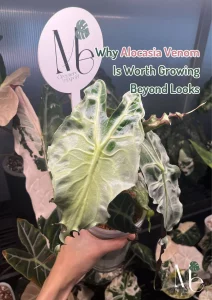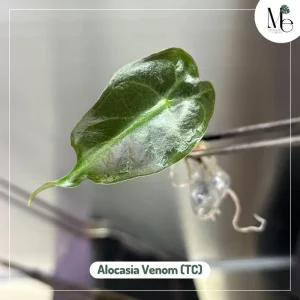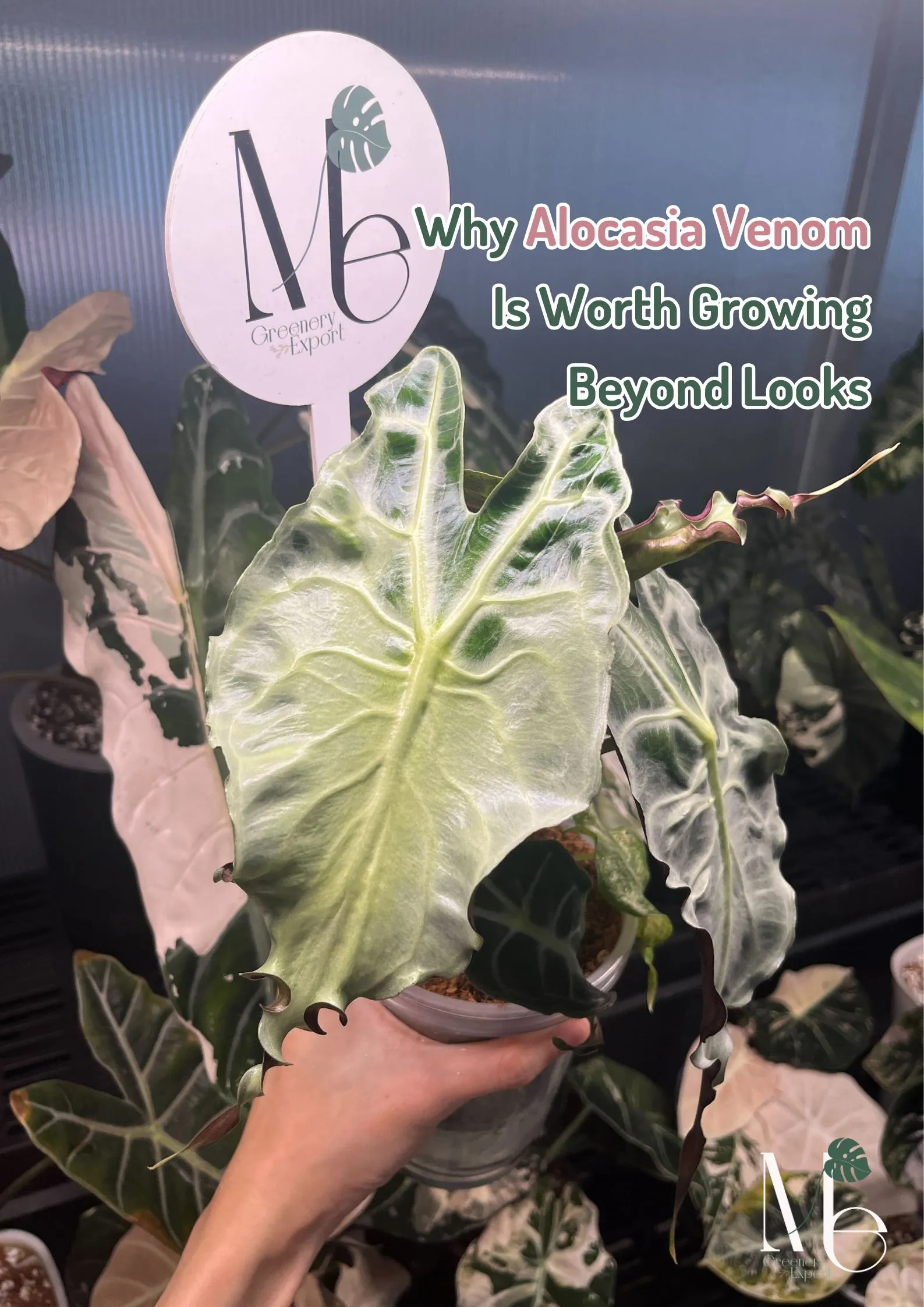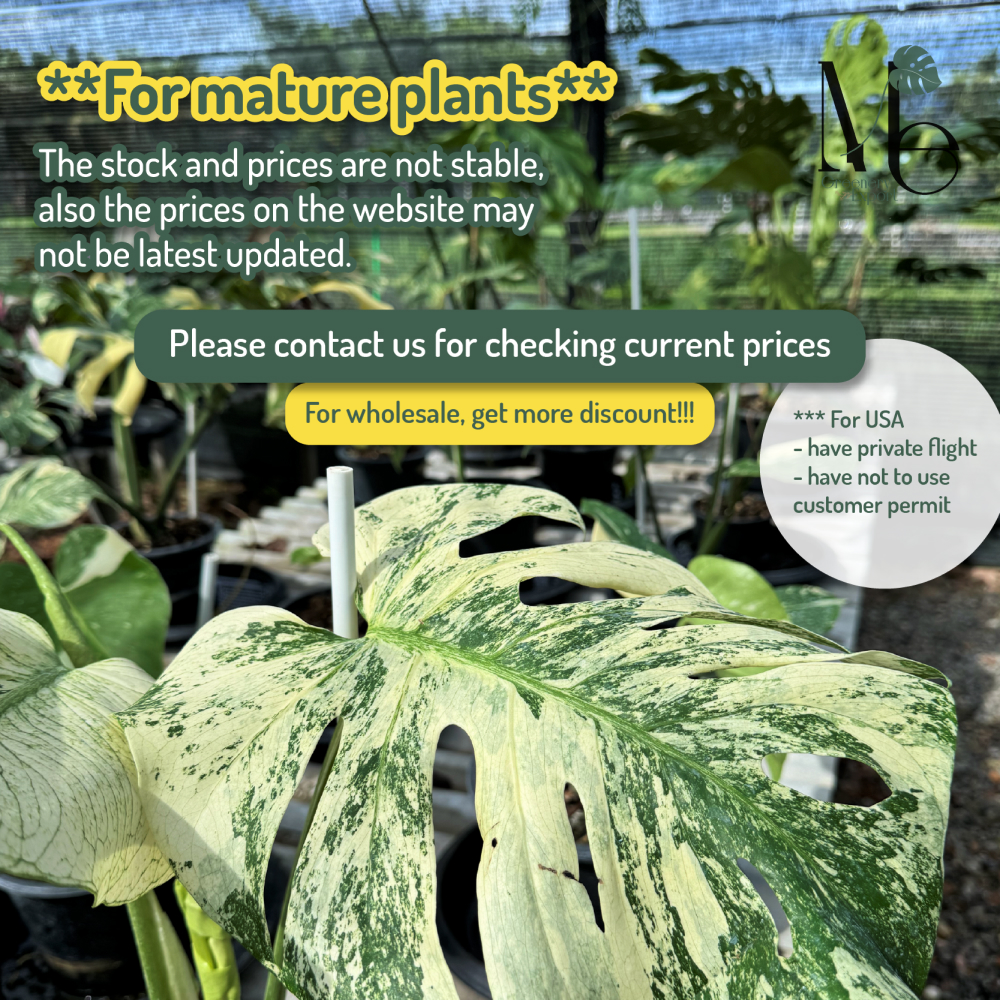No products in the cart.
Cart
(0)
No products in the cart.
Why Alocasia Venom Is Worth Growing — Beyond Looks
DATE : September 30, 2025 By : me-editor01

Alocasia Venom isn’t just another leafy aroid—it’s like the black leather jacket of the indoor plant world. It commands attention with its dramatic foliage, rich textures, and mysterious presence, combining elegance and boldness in one botanical package. Every leaf seems sculpted, every vein hinting at something wild and untamed.
Distinctive Traits That Set It Apart
- Texture & Depth: The leaf surface often carries a sheen which is sometimes metallic, sometimes matte with subtle ripples or folds that catch and reflect light in intriguing ways.
- Veining That Tells a Story: Veins aren’t just lines; they’re statements. Bold, sometimes contrasting, sometimes softly blended, depending on how much light and humidity the plant receives.
- Leaf Form Variation: As it ages, ‘Venom’ tends to develop individual personality—new leaves may differ in shape, curvature or even color shade from older ones. This variance adds character.
- Colour Nuance: More than just green. Expect white to creamy undertones, occasional mintish tints, especially in filtered light, and shadows that deepen its visual impact.
Thriving Environment: What It Loves
To bring out its best, ‘Venom’ needs its style pains—and its pampering:
- Light: Bright but indirect. Gentle morning rays or bright filtered light are ideal. Avoid harsh afternoon sun, which can scorch or fade that deep leaf color.
- Temperature & Humidity: Warm (but not scorching) temperatures—think 20–28°C. High humidity is a must; dry air dulls both texture and color. Mist, humidity trays or even a small humidifier help.
- Airflow: Balanced airflow helps prevent pests and supports healthy leaf shape. Still air plus moisture often leads to fungal issues, so gentle circulation (no harsh drafts) is beneficial.
Soil, Water & Feeding: The Maintenance Ritual
- Soil Mix: A chunky, airy mix—orchid bark, perlite, maybe some charcoal. This helps retain just enough moisture without waterlogging the root zone.
- Watering Rhythm: Keep soil consistently moist but not soggy. Let the top layer dry just a bit between watering. Overwatering is a big no—root and corm rot are real threats.
- Fertilizer: During growth periods, feed with a diluted balanced fertilizer. Drop back during rest periods (usually cooler or lower-light times) to avoid overfeeding.

Common Challenges & Tips to Overcome
- Leaf Browning/Fading: Usually a sign of too much direct sun, heat stress, or dry air. Move to gentler light and raise humidity.
- Water-Logging: Heavy soil or pots without drainage cause root issues. Always ensure the pot has good drainage holes; soil mix must allow air to reach roots.
- Pests: Look out for spider mites or scales in dry, stagnant conditions. Regular checks, mild cleaning, and increasing humidity help.
- Slow Growth or Leaf Drop: Often happens if the plant is in a low-light or cool spot. Try moving to a brighter location, and ensure warmth.
Final Thoughts: What Plants Teach Us — Through ‘Venom’
The value of growing plants goes far beyond aesthetics. Whether it’s a simple pothos or a rare Alocasia, caring for a living thing teaches us patience, presence, and resilience. They root us in the moment, soften our spaces, and remind us that growth often happens quietly — and slowly.
What makes Alocasia ‘Venom’ unique in this shared experience is its bold personality and slower rhythm. With dramatic foliage and an almost sculptural form, it demands attention — but not through noise or rapid change. Instead, it asks you to slow down and pay close attention: to how humidity affects its leaves, to how a new shoot starts to curl open, to how its colors shift with light.
In that sense, ‘Venom’ becomes a mirror of your consistency. When it thrives, it reflects your care, your discipline, and your patience. And when it struggles, it invites you to reassess — not just your watering schedule, but your environment, your time, your approach. It offers feedback in the quietest way.
So yes — all plants enrich our lives. But some, like Alocasia ‘Venom’, do so with a bit more intensity, asking us not just to take care of them — but to show up fully while doing it.
Menu



0 thoughts on “Why Alocasia Venom Is Worth Growing — Beyond Looks”